In 'Don’t Worry Darling,' the Set Design Reimagines the Haunted Housewife
Caught in a trap of pastel-tinged perfectionism, Alice's home validates feelings she can’t shake.
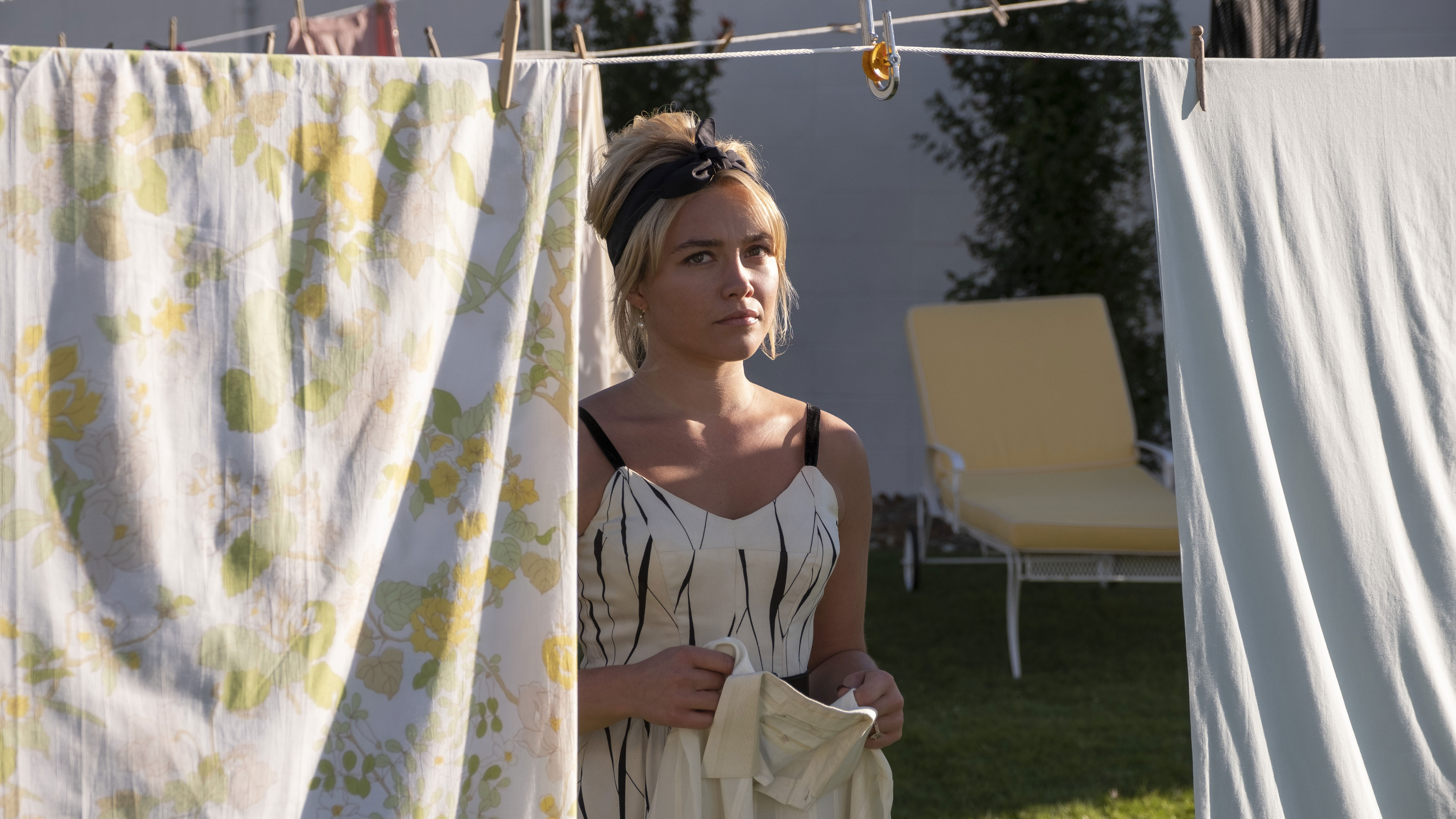
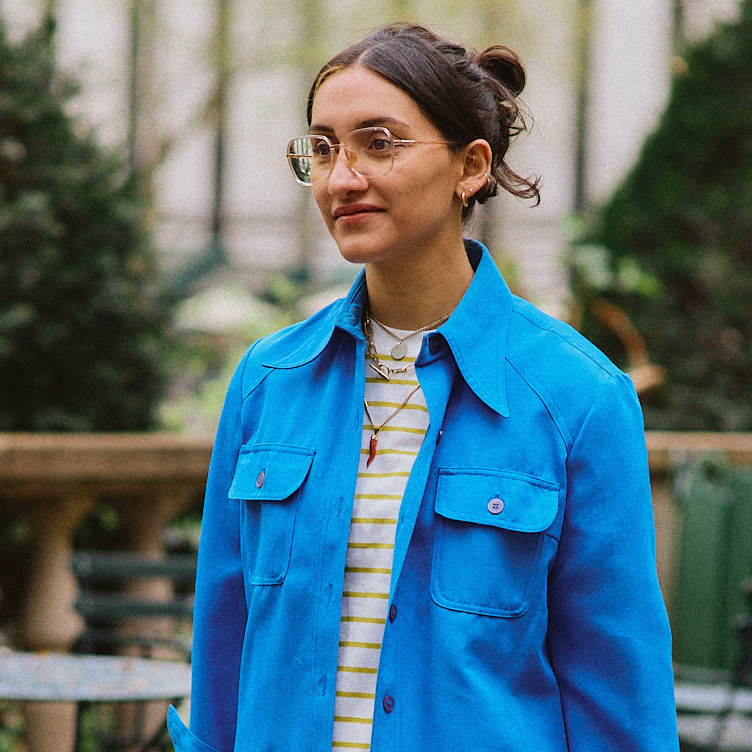
Mild spoilers for Don't Worry Darling ahead. While all the alleged drama surrounding the Don’t Worry Darling set may have left a sour taste in your mouth, the film's set design itself is sure to leave your palate feeling cleansed—and give you a renewed sense of appreciation for the movie's message.
The film, which premiered on September 23, 2022, takes place in the fictional town of Victory, a California desert retreat home to the mysterious and mighty "Victory Project." But the real-life setting is Palm Springs, a cinematic goldmine of dramatic mountains, cloudless skies, and neatly arranged palm trees. The locale is defined by its many mid-century modern masterpieces and is the birthplace of Desert Modernism style, making it the perfect backdrop for the film's vision. The chance to shoot in the West Coast hot spot, production designer Katie Byron tells Marie Claire, was a “pipe dream”-turned reality. “Olivia [Wilde] and [screenwriter] Katie Silberman always thought that Palm Springs would be where the film would take place,” she says.
Central to Don’t Worry Darling’s visual identity is the Richard Neutra-designed Kaufmann Desert House—the home immortalized in Slim Aarons’s iconic “Poolside Gossip” photograph—where Victory Project's passionate creator, Frank (Chris Pine), lives with his wife (Gemma Chan). “We saw a variety of ostentatious big mid-century homes and nothing was really working,” Byron says. “And then we got a call from [location manager] Chris Baugh that our dream [of using the Kaufmann House] was actually going to work. We threw all of our eggs in that basket and ran with it.”
Frank maintains his power through mystique, defining Victory as “freedom from society's arbitrary regulations” without ever revealing to the female residents the blueprints to his own master plan. And despite being the community's leader, we rarely see him in his own home. “Frank is kind of like [Richard] Neutra in the sense that he's a meticulous, self-involved designer,” Byron explains. “He knows exactly what he loves in his world-building,” she adds, pointing to the osmosis between storyline and set.
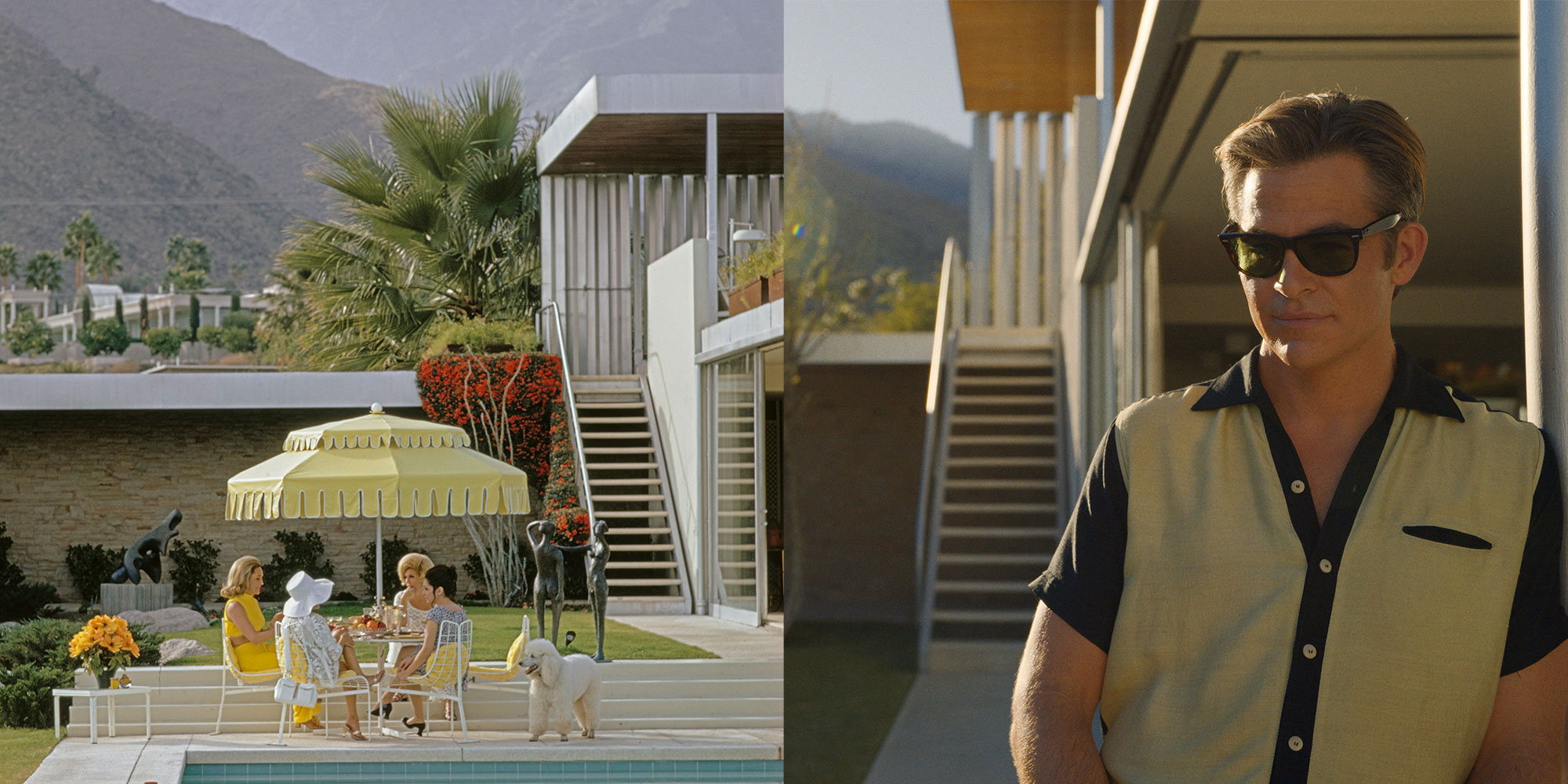
Filming at the Kaufmann Desert House required recreating many of the furniture pieces from the iconic “Poolside Gossip” image. “It was basically like, how do we make this Slim Aarons photo real?” set decorator Rachael Ferrara says.
During early discussions of the movie's production design, Bryon kept referencing the words “dark and surreal.” Ultimately that led to the idea of a “hedonistic, debaucherous approach to a utopic 1950s society.” In her work, she referenced that decade's TV shows and ads, but knew she needed to push the inspiration to the extremes to have more of an on-screen impact. “I think that those images, although they were successful in the '50s, wouldn't work on our consciousness now,” Byron says.
That's best represented through the home of Alice (Florence Pugh) and Jack (Harry Styles). But the home also proved the most tricky of sets—Byron and set decorator Rachael Ferrara had to create a U-shaped glass replica of the house, owing to its low, not-so-camera-friendly ceilings. Filming in the replica altered Byron’s original vision, she says, but it ended up creating a more intimate, voyeuristic feel. “Who's watching you?” she describes of the vibe. “Is it your partner from the other room? Are you seeing him from across the atrium?”
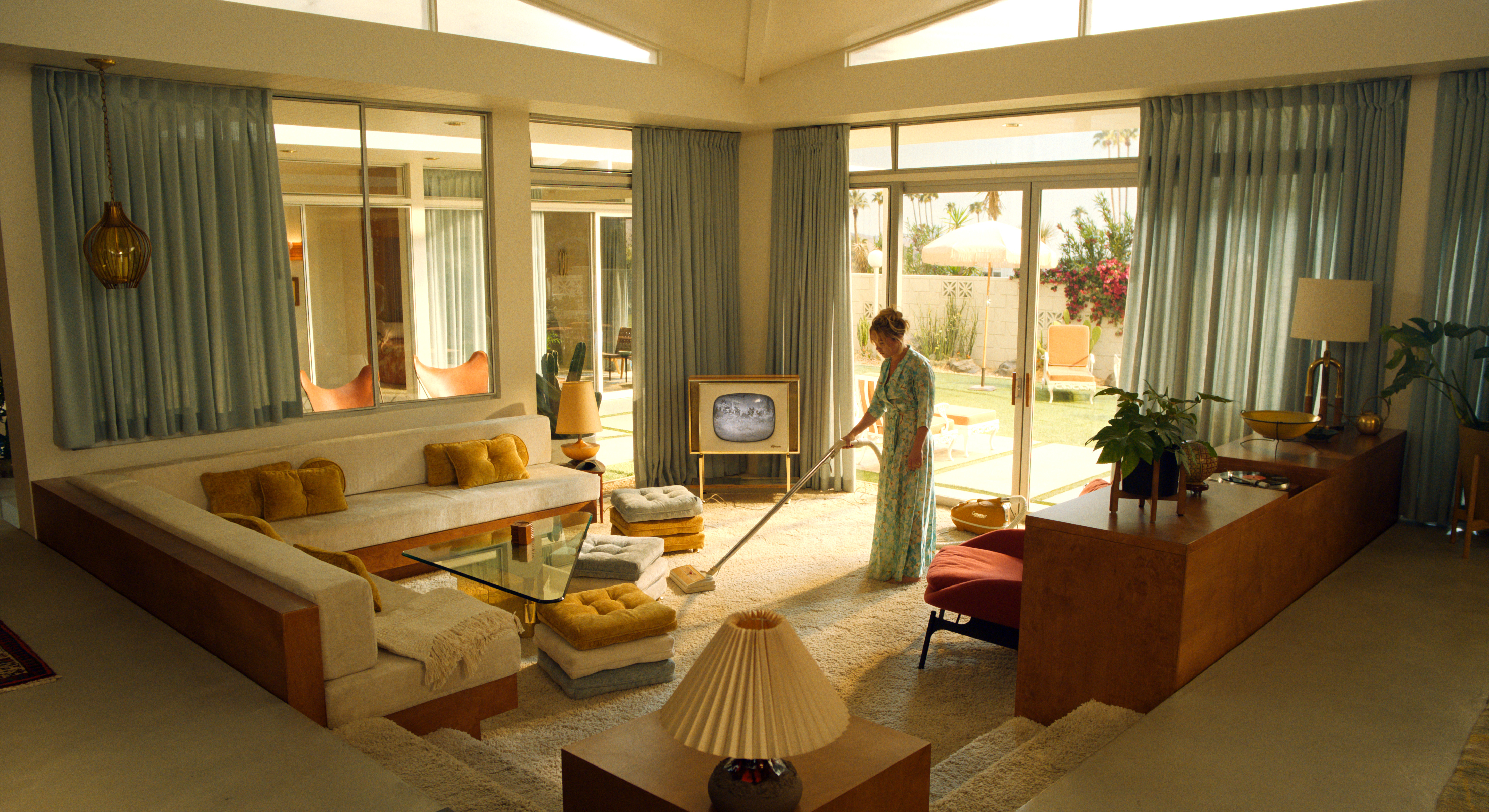
“I thought a lot about rebels of the mid-century modern era,” Byron says. “Neutra [was] a huge inspiration, but also Ray and Charles Eames and their playful aesthetic, and Alexander Girard and his attention to detail.”
Audiences spend most of their time in the set because Alice spends much of her day at home, cooking elaborate meals, scrubbing surfaces, and hanging laundry to dry. Her home is the grounding space for her entire arc to build—being seduced by her charming and handsome husband, plays hostess at boozy dinner parties for fellow Victory residents—and is also where her arc unravels.
Living in a home of glass and mirrors, she’s constantly followed by her own reflection. As she grows more isolated, her home is the only thing that validates a feeling she can’t shake. “She's still good at cleaning, she's still good at cooking,” Byron says, “but she’s starting to lose track of what reality is.”
Alice grapples with mounting distortions of time and space—waking up in her bed without any memory of falling asleep, bearing sole witness to a mysterious plane crash—while her distress is ignored by everyone around her. As she wipes and wipes her glass house clean, the walls literally close in on her.
Stay In The Know
Get exclusive access to fashion and beauty trends, hot-off-the-press celebrity news, and more.
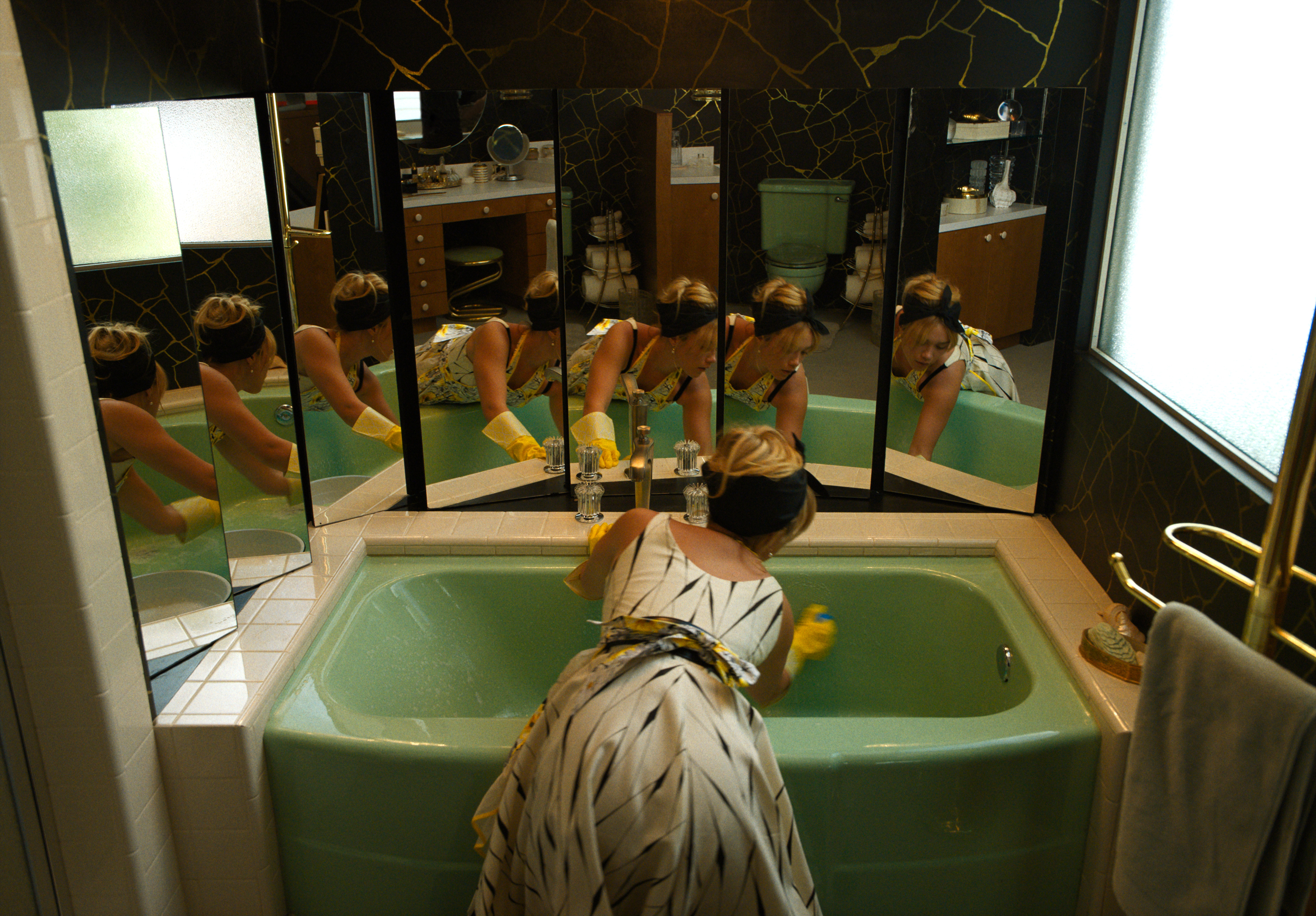
“I think [Alice and Jack's home] also it lent itself to this opulent, Alice Through the Looking Glass imagery," production designer Katie Byron says.
Then, of course, there’s the big, capital-T Twist, which reveals The Victory Project’s reality. While it’s unclear whether Alice’s revelation led to Victory’s collapse, the patriarchal paradise only ever existed because women were given certain comforts, too. “Victory is a simulation designed for men,” Byron says, “But it also had to keep women there. You have to play on a sense of intrigue and consciousness.”
It explains the simple, playful details throughout Alice’s home—small statues, ceramic birds—which bring an unexpected levity to disrupt the movie's dark underbelly. “There's a lot of sweetness; a lot of cute things, odd things,” Byron says. It’s something, she adds, is often missing from psychological thrillers: a chance to infuse a space with flourishes that speak to the housewife’s own version of her femininity. The architecture's masculine stone and concrete is softened by curtains and high pile rugs. Even Alice's own wardrobe parallels the textiles layered throughout her living spaces. “I've never seen that done in a thriller, so we really wanted to push that feeling,” Byron says. “We threw a lot of Alice in there,” Ferrara adds.
Even if the film itself leaves something to be desired, the design of Don’t Worry Darling deserves a close look—if only to marvel at its domestic beauty. Because the film was shot at the height of pandemic lockdowns, it came to represent “a dream of what real life could be,” Byron says. “Inviting people over and drinking cocktails sounded so fun.”

Lucia Tonelli is the Associate Director of Social Media at Marie Claire, where she oversees and creates content across the magazine’s social platforms. In addition to her work on social, Lucia writes about fashion, design, celebrities, and culture. Prior to Marie Claire, Lucia held positions at Town & Country Magazine and ELLE Decor. When she’s not sleuthing the internet, she can be found tending to her sourdough starter or placing bids on vintage furniture she doesn’t need.
-
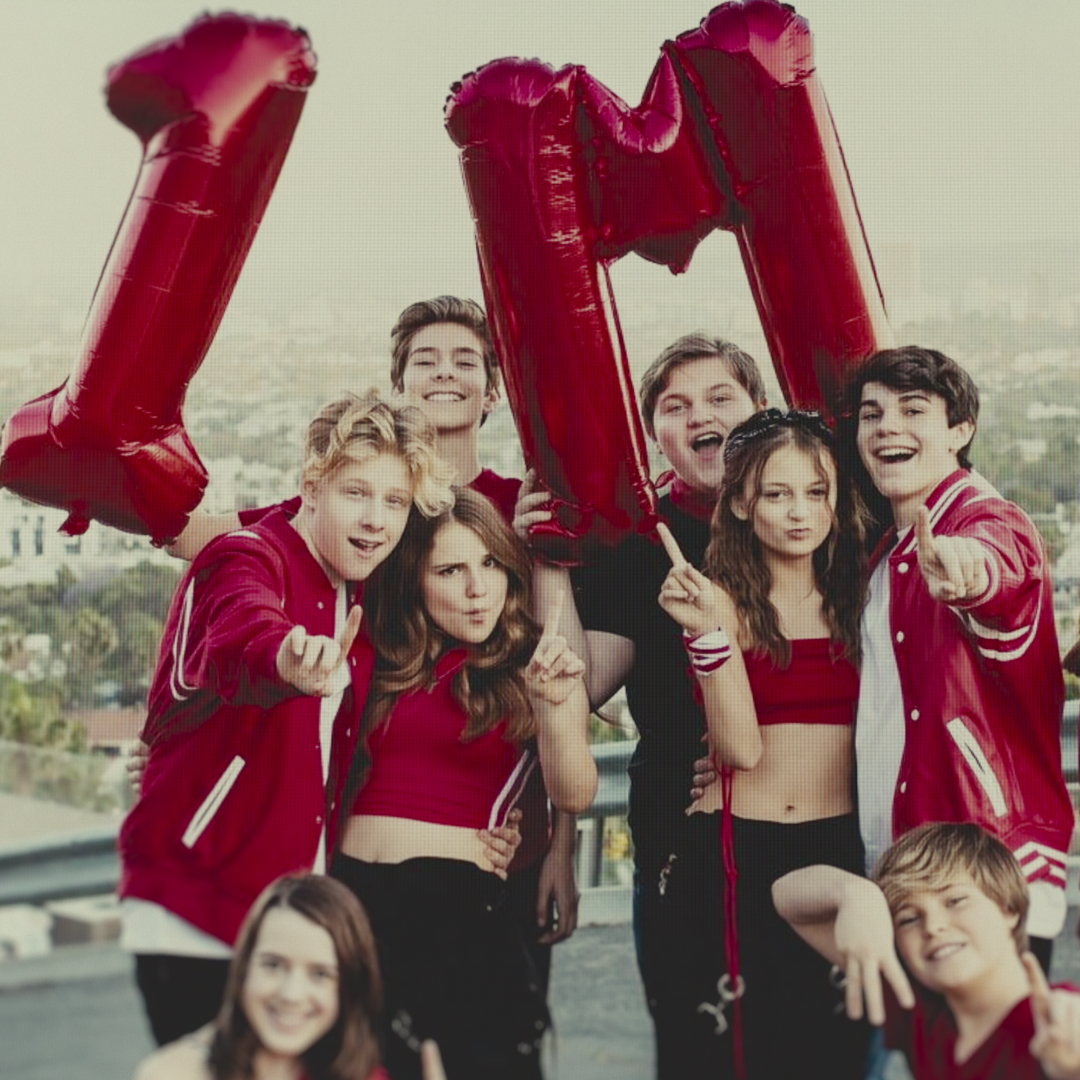 'Bad Influence' Charts the Demise of a Popular Social Media Squad—Here's Where the Kidfluencers Are Now
'Bad Influence' Charts the Demise of a Popular Social Media Squad—Here's Where the Kidfluencers Are NowThe names in the Netflix docuseries have fallen out of touch with subject Piper Rockelle.
By Quinci LeGardye Published
-
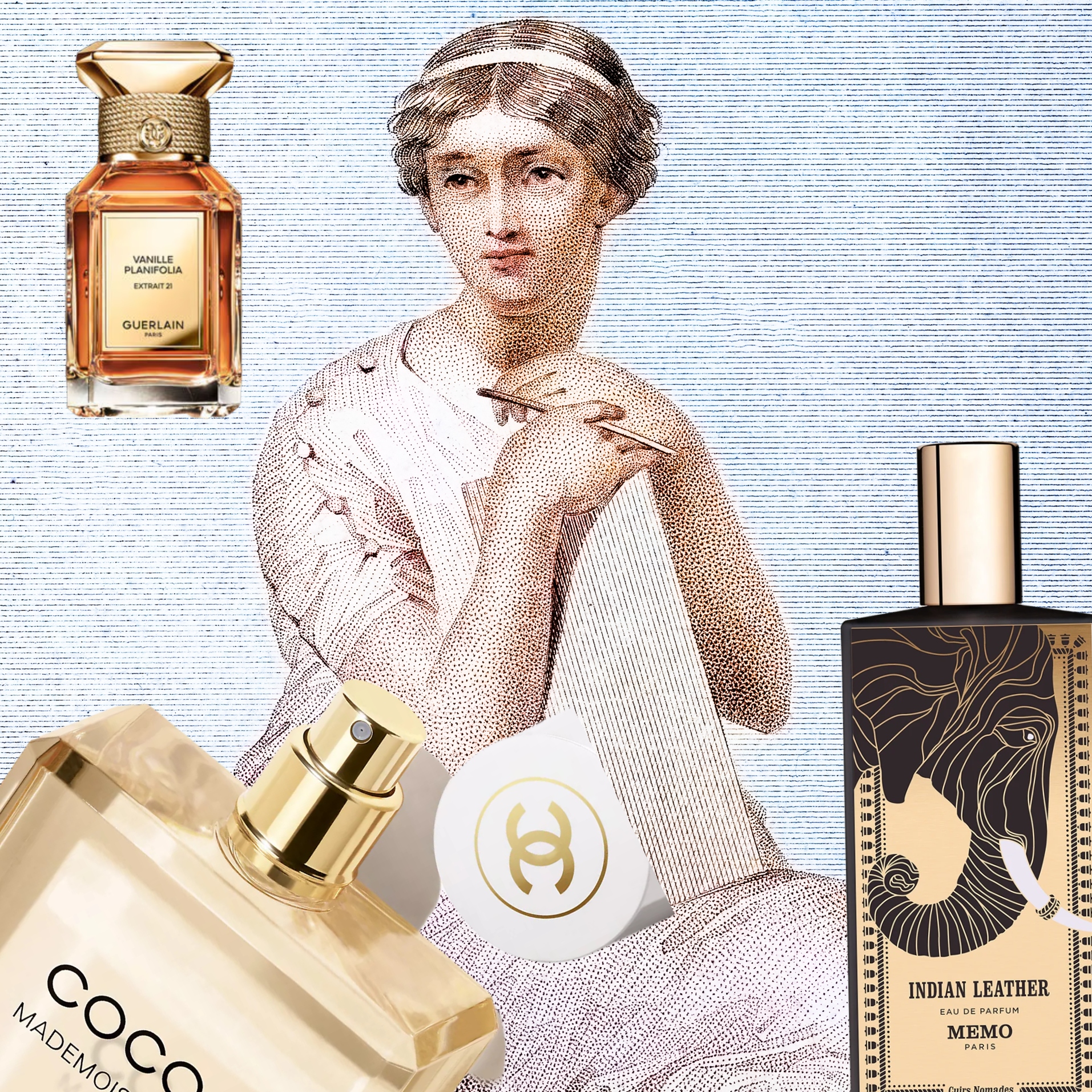 What's Your Olfactory Personality?
What's Your Olfactory Personality?Curating your scent style infuses individualism into a perfume wardrobe.
By Samantha Holender Published
-
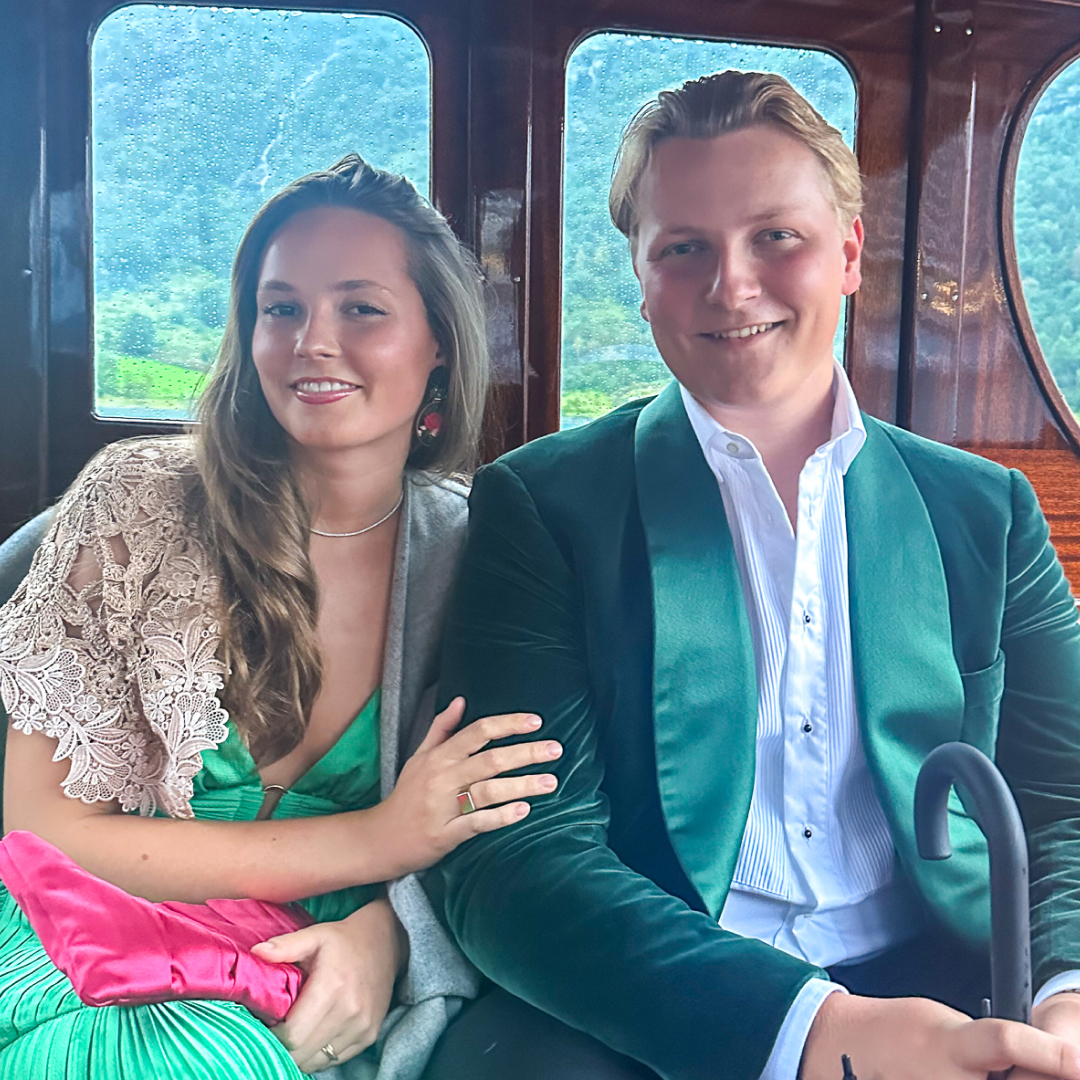 The Future Queen of Norway Trades Camo Fatigues For a 125-Year-Old Tiara and Her Mom's Old Evening Gown
The Future Queen of Norway Trades Camo Fatigues For a 125-Year-Old Tiara and Her Mom's Old Evening GownSomething old, something new, something borrowed, something blue.
By Kristin Contino Published
-
 Every Ruth Ware Book, Ranked—From 'In a Dark, Dark Wood' to 'The Woman in Cabin 10'
Every Ruth Ware Book, Ranked—From 'In a Dark, Dark Wood' to 'The Woman in Cabin 10'Here's what you should read before her new thriller 'The Woman in Suite 11' hits shelves.
By Nicole Briese Published
-
 10 Books to Read for a Killer Vacation
10 Books to Read for a Killer VacationPack these novels about vacations gone very wrong on your next trip.
By Liz Doupnik Published
-
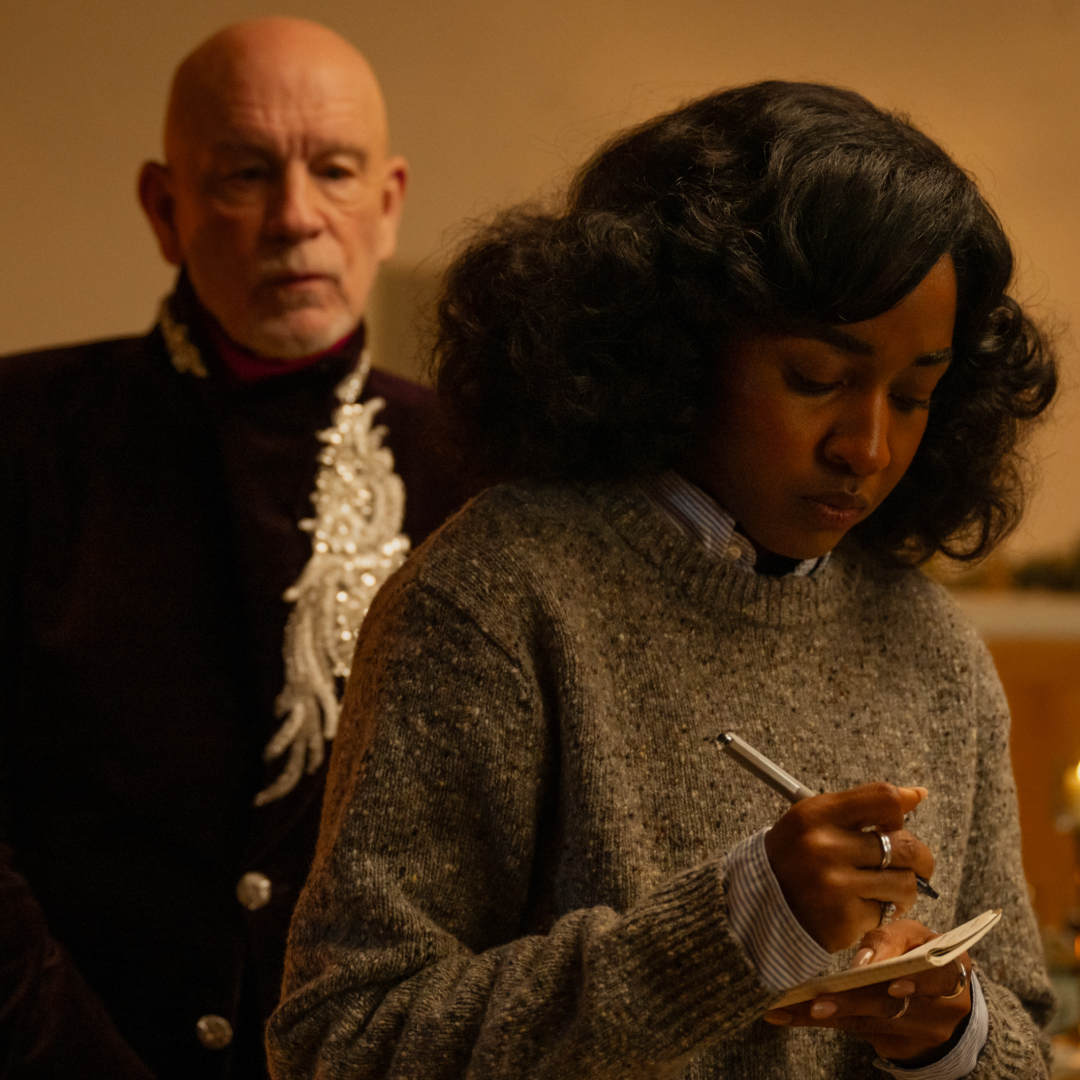 In 'Opus,' Cult Leaders and Pop Stars Are One in the Same
In 'Opus,' Cult Leaders and Pop Stars Are One in the SameThe A24 film's costume and production designers open up about crafting fictional pop icon Moretti’s style and mysterious estate.
By Sadie Bell Published
-
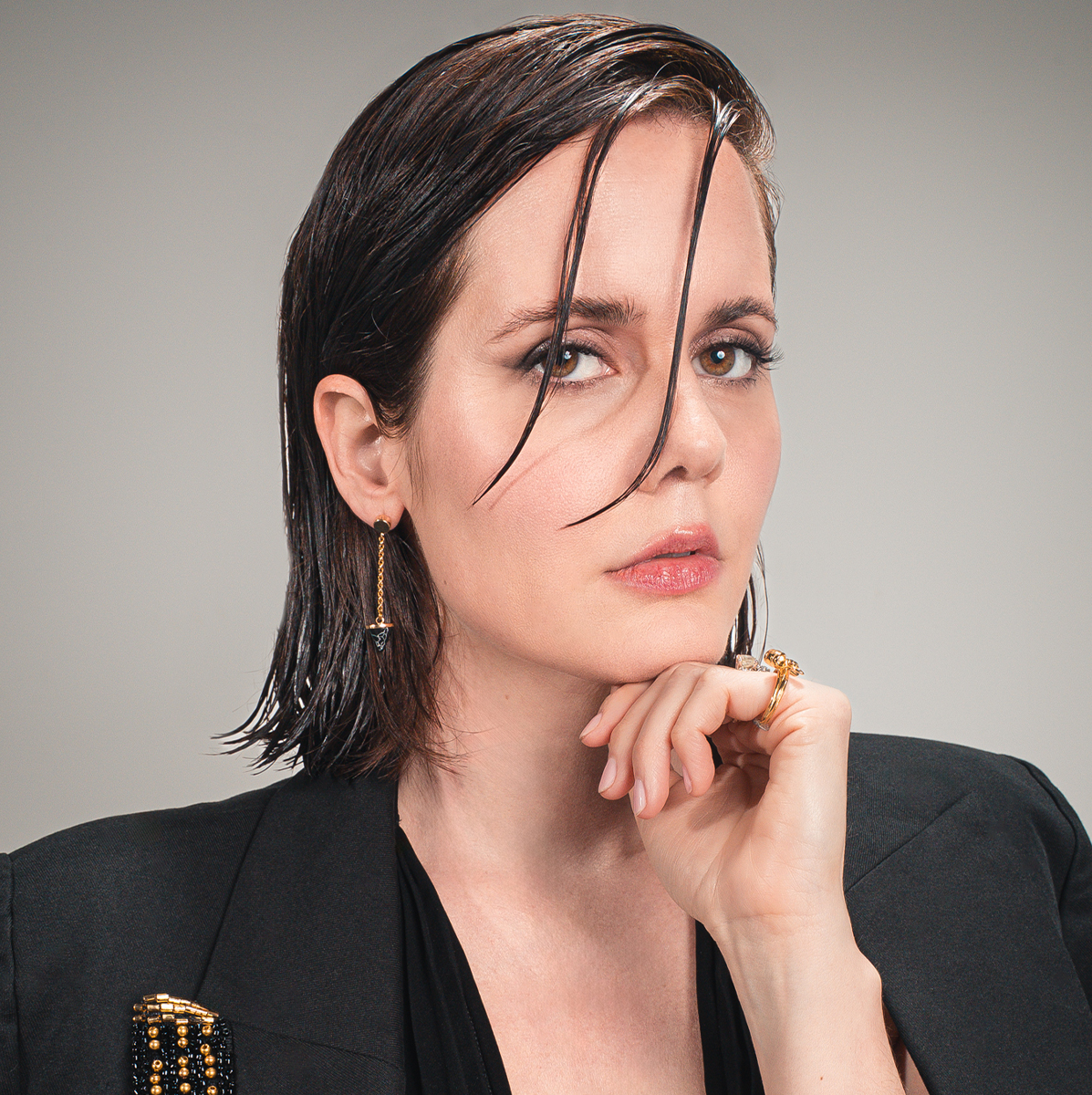 Ashley Sutton Is Not Going to Take Things Lying Down
Ashley Sutton Is Not Going to Take Things Lying DownThe actress who plays Hannah has been dying to talk about the Showtime hit's major twist for months.
By Sadie Bell Published
-
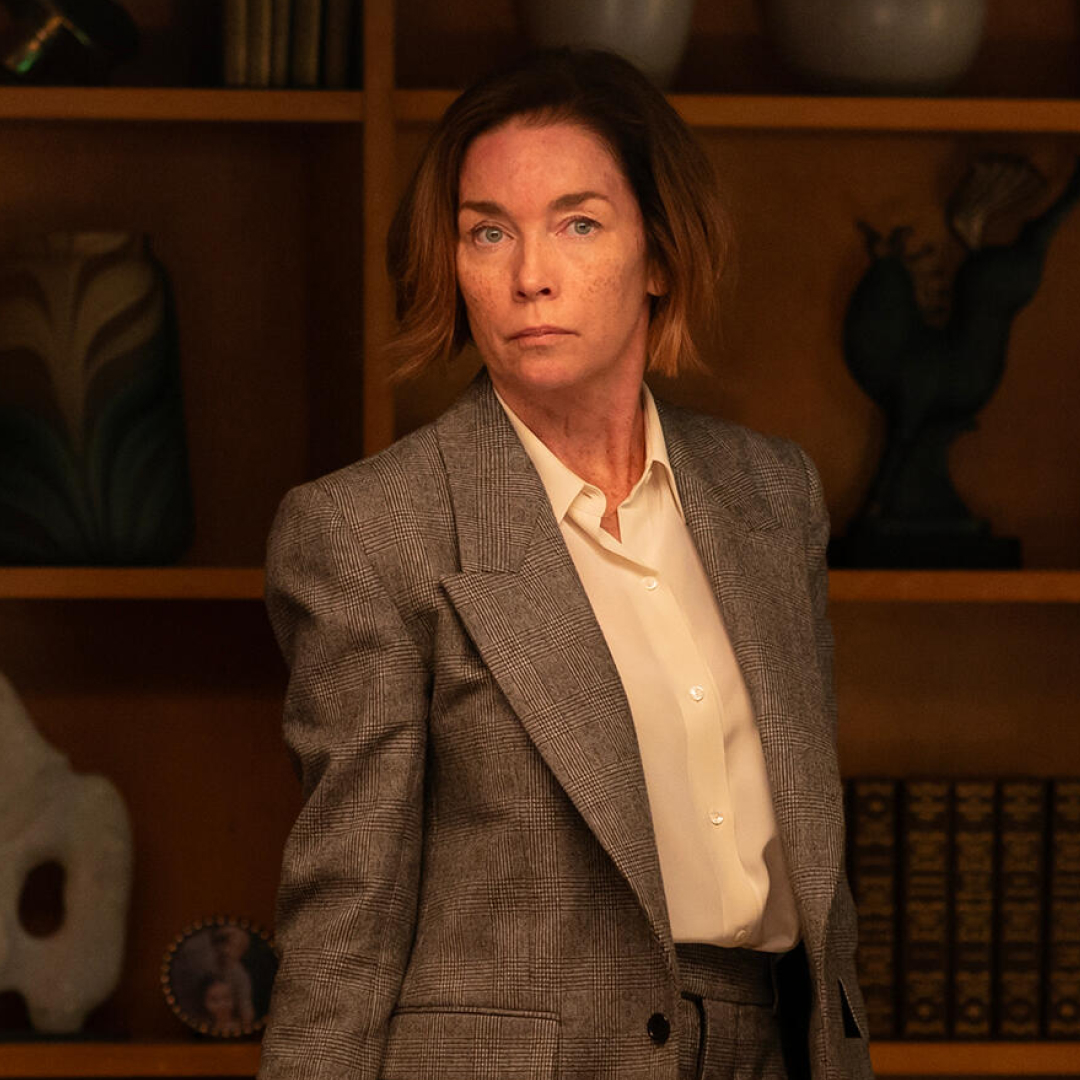 'Paradise' Finale Recap: Breaking Down the Shocking Season 1 Ending
'Paradise' Finale Recap: Breaking Down the Shocking Season 1 EndingWe're still reeling from all of those twists!
By Radhika Menon Published
-
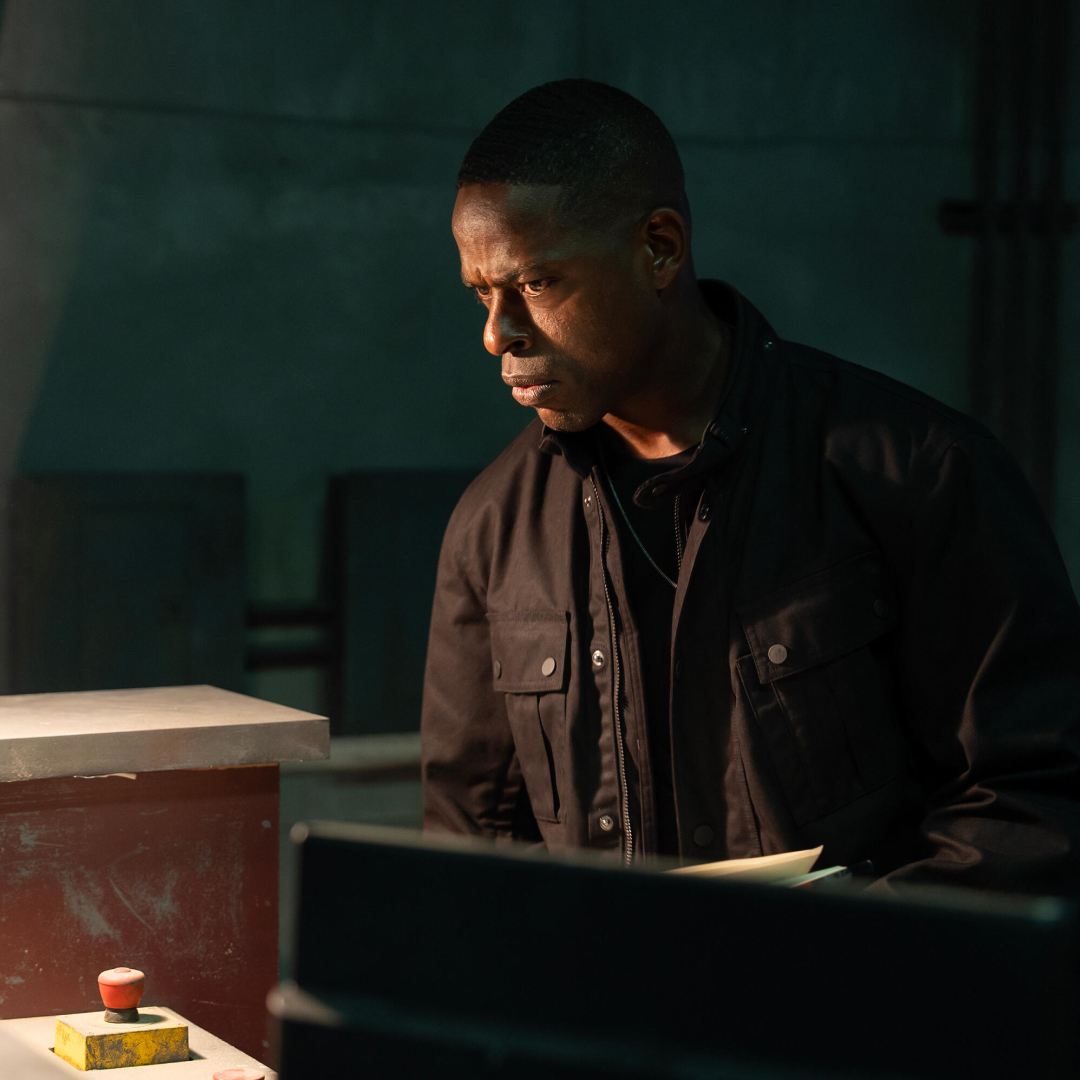 'Paradise' Season 2: Everything We Know
'Paradise' Season 2: Everything We KnowHere's everything we know about the next installment of the twist-filled series.
By Quinci LeGardye Last updated
-
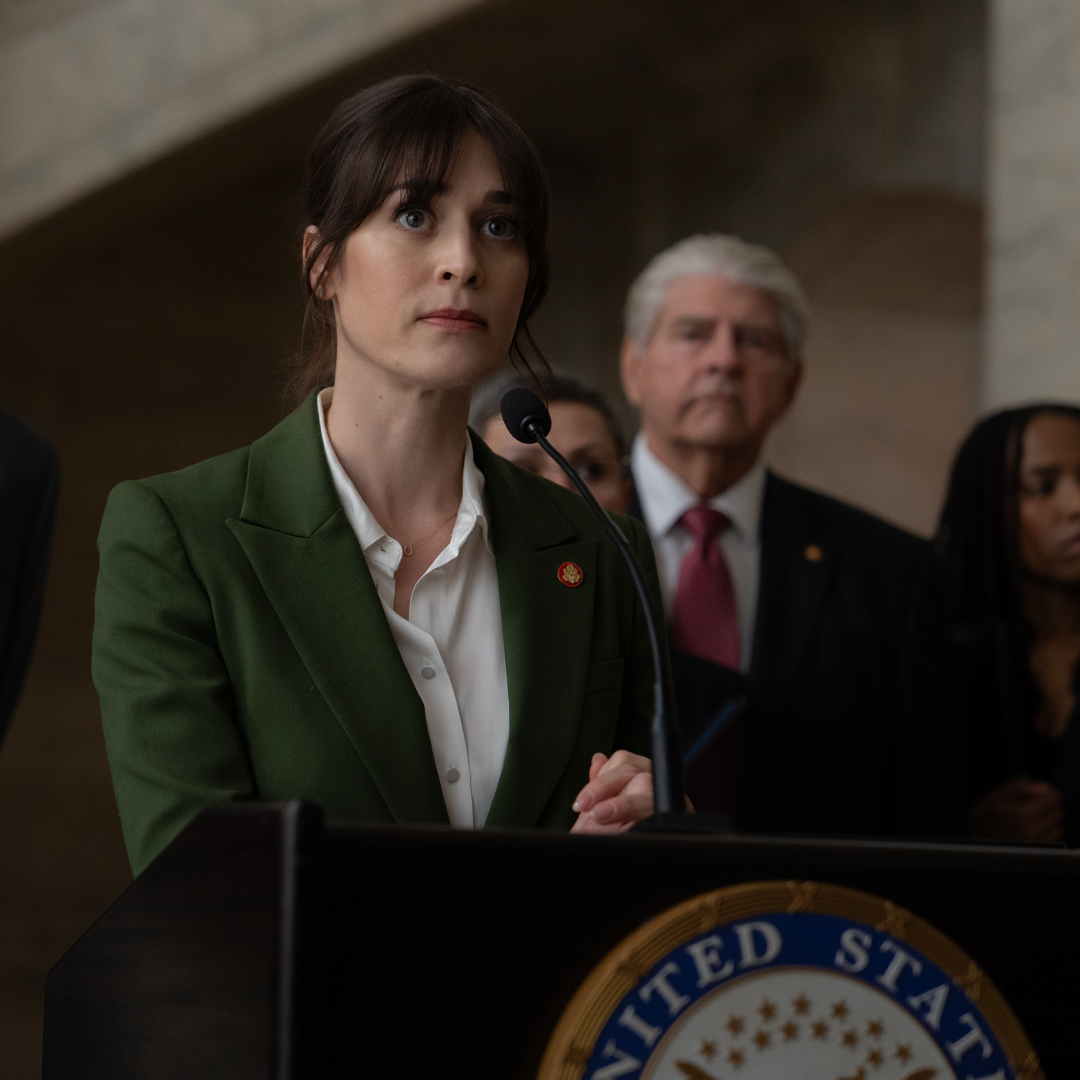 'Zero Day' Ending Explained: Breaking Down Episode 6 of the Netflix Miniseries
'Zero Day' Ending Explained: Breaking Down Episode 6 of the Netflix MiniseriesShall we cue "Who Killed Bambi" one last time?
By Radhika Menon Published
-
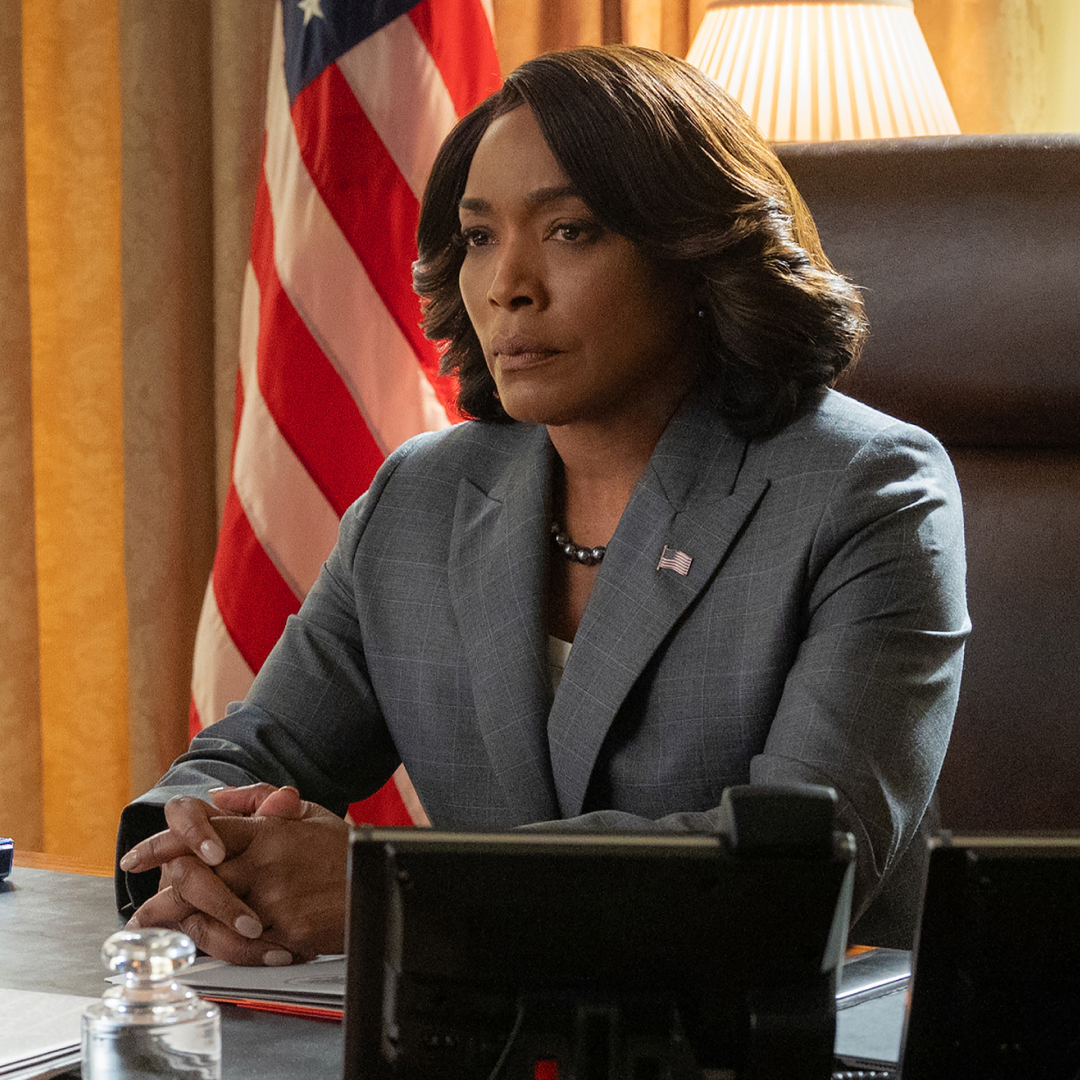 Meet the Cast of 'Zero Day'
Meet the Cast of 'Zero Day'The miniseries marks Hollywood legend Robert De Niro's first leading TV role.
By Radhika Menon Published